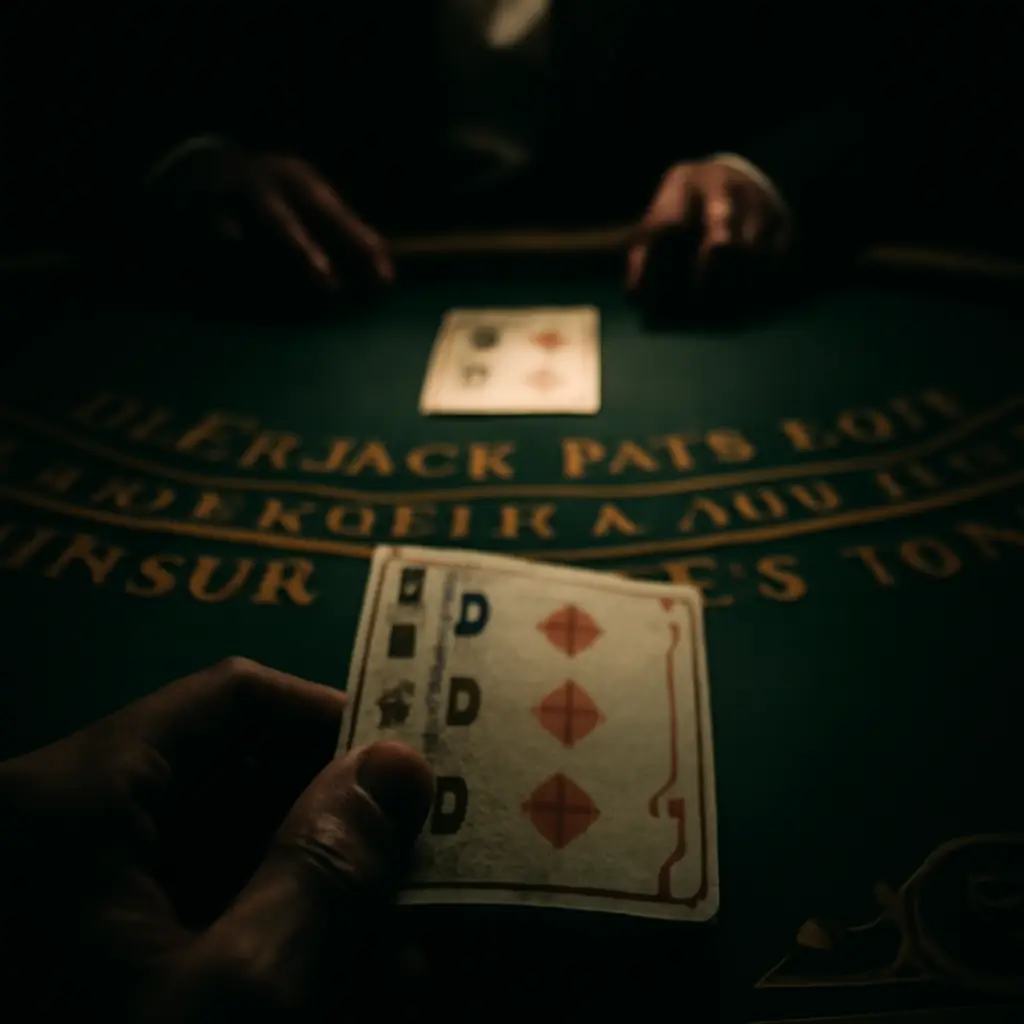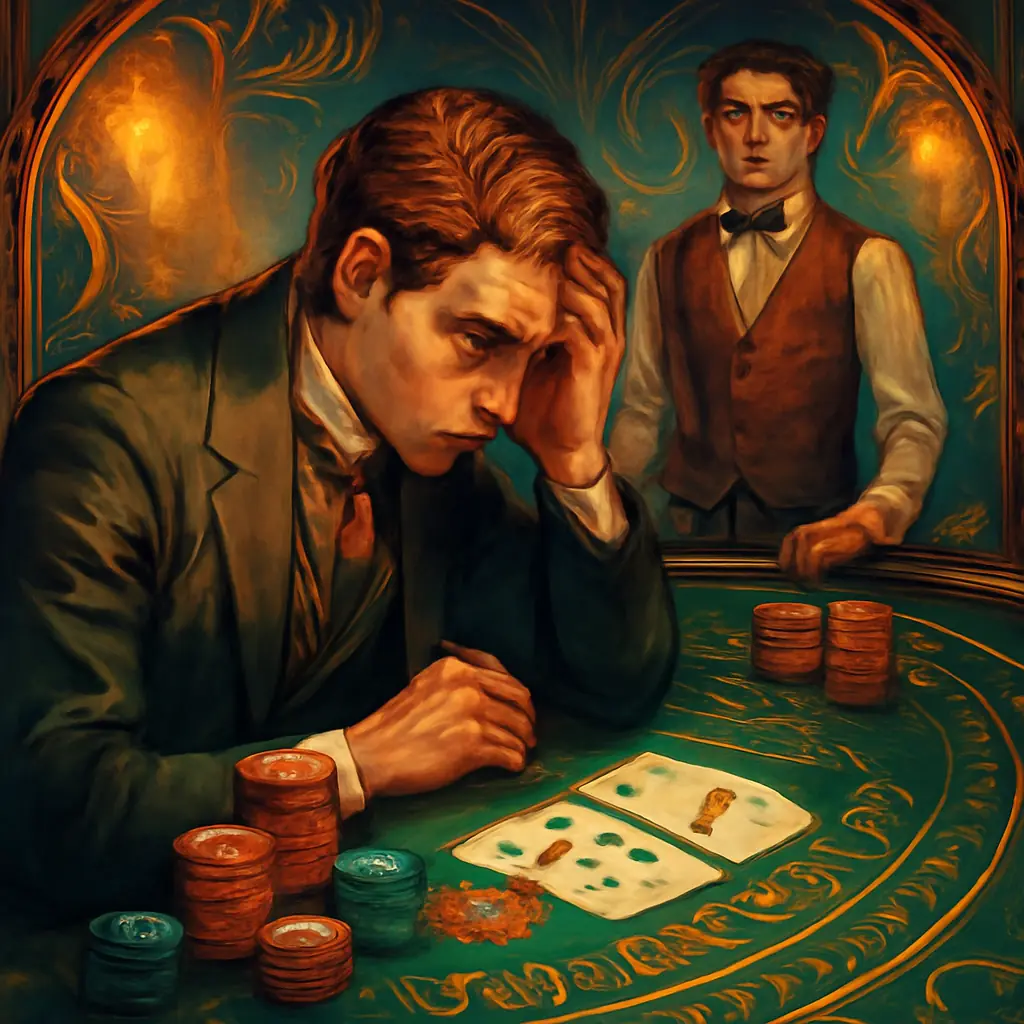Introduction
Picture this: You’re at the blackjack table, the air thick with anticipation. You’ve got a sixteen staring back at you, and the dealer’s showing a ten. A bead of sweat trickles down your forehead. Do you risk it all with a hit, potentially busting and losing your hard-earned cash? Or do you stand firm, hoping the dealer will somehow draw a worse hand? As a seasoned gambler once quipped, “Blackjack: the only place you can get 21 and still feel like a loser.”
That agonizing “hit or stand” moment on sixteen is a classic blackjack dilemma. While gut instinct might scream one thing, the mathematically optimal strategy often points in a different direction. Understanding this pivotal decision can dramatically reduce the house edge and improve your odds of walking away a winner in the long run. Forget luck; this is about cold, hard probabilities. So, buckle up, because we’re about to dive into the nitty-gritty of playing that dreaded sixteen.
Understanding Basic Blackjack Strategy
Blackjack is a captivating card game where players aim to beat the dealer by accumulating cards with a total value as close to 21 as possible, without exceeding it. Mastering the fundamental rules is the first step toward enjoying the game and improving one’s chances of winning. Key to success in blackjack is understanding the terminology. To “hit” means to request another card, while to “stand” signals that the player is content with their current hand. A crucial element is the dealer’s “upcard,” the single card of the dealer’s hand that is visible to all players. This upcard heavily influences players’ decisions.
Basic strategy provides a framework that dictates the optimal action in any given situation. It’s not a guaranteed win but a mathematically derived method to minimize the house edge. By consistently adhering to basic strategy, players can transform from casual gamblers to informed decision-makers, significantly increasing their enjoyment and potential for success at the blackjack table. Basic strategy is the bedrock of competent blackjack play. Its genesis lies in rigorous probability calculations of what actions give the player the best chance of success in the long run.
Why Basic Strategy Matters
Basic strategy is more than just a set of rules; it’s a game-changer. It directly influences the winning rate, and while it might appear rudimentary, its impact is substantial. For example, knowing when to hit a soft 17 (an ace counted as 11) against a dealer’s upcard of 6 can drastically improve the odds. Without it, players are essentially guessing, handing the house an even larger edge. Basic strategy is the tool to decrease the house edge in blackjack. It empowers a player with knowledge, making each decision a calculated move rather than a shot in the dark.
The Dealer’s Upcard and Its Impact
In blackjack, the dealer’s upcard serves as a crucial piece of information, heavily influencing player decisions. It provides a glimpse into the dealer’s potential hand, significantly impacting the odds and probabilities for both the player and the house. When faced with a hand like 16, the dealer’s upcard becomes the most critical factor in deciding whether to hit or stand. A low upcard, like a 2 through 6, suggests the dealer has a higher chance of busting, making it more favorable for the player to stand. Conversely, a high upcard, such as a 7 through Ace, indicates a stronger dealer hand, often pushing the player to hit in hopes of improving their total, even with the risk of busting. Understanding how to interpret the dealer’s upcard is fundamental to employing effective blackjack strategy and minimizing the house advantage.
Common Misconceptions
Many blackjack players fall into the trap of believing hunches or gut feelings, often leading to costly mistakes. One common misconception is thinking that past hands influence future outcomes – each hand is independent. I’ve seen players stubbornly sticking to a bad strategy, convinced that a win is “due” after a series of losses. Another error is mirroring the dealer’s actions, hitting on 16 or higher regardless of the upcard. This is a surefire way to diminish one’s odds. These kinds of bad habits dramatically increase the house advantage. If you’re seeing yourself doing the same consider changing your strategy.

Why 16 is a Tricky Number
In Blackjack, a hand totaling 16 presents a real dilemma. It’s a weak hand, teetering on the edge of disaster. The problem? Hitting on 16 carries a significant risk of busting – exceeding 21 and automatically losing the game. This makes 16 a particularly sticky situation for players.
The Danger of Hitting
Hitting on 16 requires careful consideration. The odds of receiving a card valued at 5 or less are in your favor, but any card valued at 6 or higher will push you over 21. The probabilities vary depending on the dealer’s upcard and the number of decks being used. Players should take time to analyze the game to make a perfect decision.
The Math Behind Hitting vs. Staying on 16
In blackjack, the decision to hit or stay on 16 is a pivotal moment, steeped in mathematical probabilities. It’s not just a gut feeling; it’s a calculated risk based on the dealer’s upcard and the odds of improving your hand without busting. The core of this strategy lies in understanding the likelihood of drawing specific cards from the deck. If the dealer shows a 7 or higher, basic strategy dictates hitting. This is because the dealer has a high probability of making a strong hand, forcing you to improve yours to win.
Essentially, you’re betting that drawing another card will get you closer to 21. But there’s a significant risk: any card higher than a 5 will cause you to bust. When facing a dealer’s high card, embracing the odds and hitting on 16 actually presents a better chance of success compared to standing pat and hoping the dealer busts.
Probability Analysis
The essence of blackjack math is grasping probability. For example, let’s consider the odds of busting when hitting on 16. In a standard deck, there are 10 cards (10, J, Q, K) with a value of 10. Any of these cards, plus any card valued 6 or more, will cause a bust. This means that there will be more chance of busting than winning. The calculation changes depending on the number of decks in play, but the principle remains: understanding and applying probability is crucial for making informed decisions and increasing your chances of winning at the blackjack table.
When to Deviate from Basic Strategy
While mastering basic strategy is crucial for blackjack success, it’s important to recognize that it isn’t always the absolute best path. There are specific, albeit rare, circumstances where deviating from the standard approach can offer a slight edge. However, attempting to “think outside the box” without a solid understanding of these situations is generally a recipe for disaster. Any deviation from the basic strategy should be carefully evaluated and grounded in mathematical probability, not hunches or feelings.
One such situation where deviating from basic strategy might be advantageous is when employing card counting techniques. In blackjack variants such as Spanish 21, the basic strategy is different.
Card Counting
Card counting is a strategy used to determine whether the next hand is likely to favor the player or the dealer. By keeping track of the ratio of high cards to low cards remaining in the deck, players can adjust their bets and playing decisions accordingly. For example, a card counter might increase their bet size when the deck is rich in high cards, as this increases the likelihood of being dealt a blackjack or a strong hand. They can also change the hit/stay decision according to their calculation.

Putting It All Together: A Practical Guide
Realistic Examples
Imagine yourself at a bustling blackjack table. The energy is palpable, cards are being dealt, and chips are clinking. You’ve absorbed the strategies, understand the odds, and feel confident. This is where the rubber meets the road – strategy implementation in real-time. Let’s walk through some common scenarios you might encounter and how to navigate them with skill and finesse.
Conclusion
A New Journey
Blackjack strategy boils down to mastering key decisions, and knowing when to hit or stay on 16 is definitely a big one. This knowledge is not just theory, it is the base that you need to keep learning. Now that you armed yourself with this strategy, play responsibly and put your skills to the test!
Every game is a step to become a winner, continue reading and learning with our content to beat the house.
